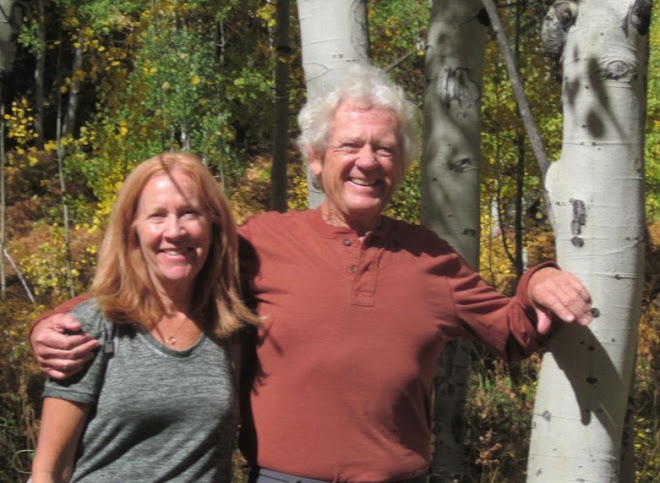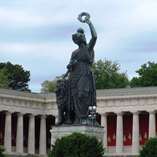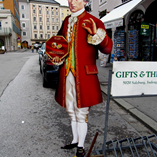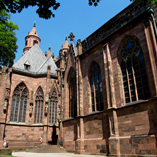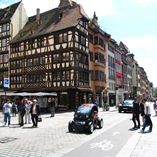“Travel makes one modest. You see what a tiny place you occupy in the world.”
Gustave Flaubert
Germany’s weather in May was rainy with temperatures more winter than spring. However, June could not have been lovelier. Germany is a wealthy country and its people are generally considered to be hard-working, determined, and efficient. Since WWII and in contrast to this stereotype, it has developed into a multi-ethnic, multi-cultural melting pot. Countless towns were destroyed by WWII bombing but many have been meticulously rebuilt to the original plans. East Germany has had many updates since being returned to Germany from the former Soviet Union. Germany’s romantic images are dense forests, ancient fairytale castles, timber-framed architecture, lakes, mountains, cliffs, ruins, and elaborate gardens. Popular foods include bratwurst, sauerbraten, and knodel. They have over 1200 breweries and excellent wines in the Rhine Valley. We tried to sample as many as we could. We found each one good tasting and enjoyable.
We found that German drivers were courteous, not distracted while driving, and very skilled drivers. We were leery driving on the Autobahn before we got there. Driving on the Autobahn is much like driving on US interstates used to be. Slow drivers do no plant themselves in the left lanes. No one passes on the right, including at exits. Exiting is done from the nearest lane and not several lanes to the left at the last second. Weaving in and out of lanes to pass is not done. There are a few really fast cars that pass by quickly in the farthest left lane when no speed limits are posted, but most of us stayed in the right lane driving at a speed with the flow of traffic. BMW, Audi, Mercedes, VW, & Porsche cars were everywhere.
Everyone we asked for directions was very helpful, even if they didn’t speak English. They are more formal in their dress and even wore dress pants to sweep their steps. We observed that they clean their shops and homes in the morning, and the debris from Friday night partying on the street was removed and the street was restored to immaculate condition by 5AM on Sat morning. Young people were courteous too, instead of bumping into us as we find in US, they moved out of the way. It was so refreshing. Ice cream is consumed by locals like we couldn’t believe. It is the snack of choice – and the serving size is smaller than the US. Water in restaurants is always purchased bottled water - bubbly or still. In every town or village, the church bell towers rang every ¼ hour or for special occasions. So quaint and we miss hearing them!
Their TV had so many fewer commercials - unsurprisingly. Almost all channels were in German with no subtitles. English channels were only CNN or BBC. CNN had interesting political and eventful stories of around the world – not just fear and gore and mayhem. Even the weather was all over the globe, not just Europe. Fascinating! Who knew it was monsoon season in India?
The Black Forest area is renowned for its spas, cuckoo clocks, dolls, Nutcrackers, and of course, beer. “Munich nestles between art and beer like a village between hills” wrote Heinrich Heine some 150 years ago. It marries old Bavarian tradition with a vibrant modern life. Munich was almost completely destroyed in two world wars yet it has managed to recreate much of its folkloric Bavarian past. Bavaria is the top tourist area due to its mix of urban & rural landscapes. This is where the famous Oktoberfest is held. Oktoberfest attracts 6 million visitors every year for a 2-week period ending the first Sunday in October. Most vibrant were the beer gardens. Hofbrauhaus beer hall is the most traditional, established in 1589, where our German friends took us. They showed us all the sights of Munich, such as the famous Glockenspiel, English garten, the BMW Headquarters and World Park, the 1972 Olympiapark (where 11 of the Israeli athletes were taken hostage and eventually killed), the amazing architecture and churches, and the Hirschgarten - the largest outdoor biergarten in Munich which seats up to 10,000 people.
We had never been to a concentration camp memorial, so we went to Dachau near Munich. It had a museum, the roll-call yard area; the watchguard towers & barbed wire fencing; a model of a barracks building; the “bunker” which is where the worst torture, starvation, & solitary isolation took place; the crematorium which disposed of bodies; an example of the rooms of disrobement, “showers”, then a room where they piled up the bodies [even though this type of “extermination” did not take place at this camp Dachau was a work camp.] This c.c. was opened 2 months after Hitler took power and was the first c.c., becoming the model for the others. It was open for 12 years, from 1933-1945 when it was liberated. It was also an SS training center. “Arbeit Macht Frei” on the gate means Freedom Through Work. Munich was the birthplace of the Third Reich as Hitler moved from Vienna to Munich since it was the capital of Bavaria. NAZI came from NSDAP, or National Socialistic Democratic Workers Party, NAZIE. The c.c. was not limited to Jews, but also for dissidents, antisocials, misfits, gypsies, outspoken clergymen, Jehovah’s witnesses, homosexuals, and Polish. Citizens of over 30 nations were held here. Germany is one of the few countries of the world where Holocaust denial has been declared as a federal crime. Any public official found to associate with neo-nazism is immediately impeached.
Nuremberg is a medieval walled city, home to the Nuremberg Nazi Rallies and the Nuremberg Trials. Nuremberg was 90% destroyed in WWII. We walked up to the Imperial Castle, a gem of the Holy Roman Empire in 1219. There are many Turkish immigrants here, as we saw in Munich. Nuremberg is known for gingerbread (lebkuchen), Pffefrerneusse cookies, and small “Nuremberg” sausages. Local folklore is that the sausages were “cocktail wiener” size so they could be slipped through the keyholes of the prison doors.
We have wanted to visit Germany for years and our timing was fortuitous such that we had Munich locals as tourguides and travel advisors. Our thanks go out to Lothar & Edith for everything they did for us. You helped make our trip even more memorable and exceptional.
We continue to be so impressed at the historical dates (4th century, 12-17the century) compared to the US. We have created so many wonderful memories of this entire European trip and can’t wait to return. You all may want to know that this concludes our blogs from this trip.
